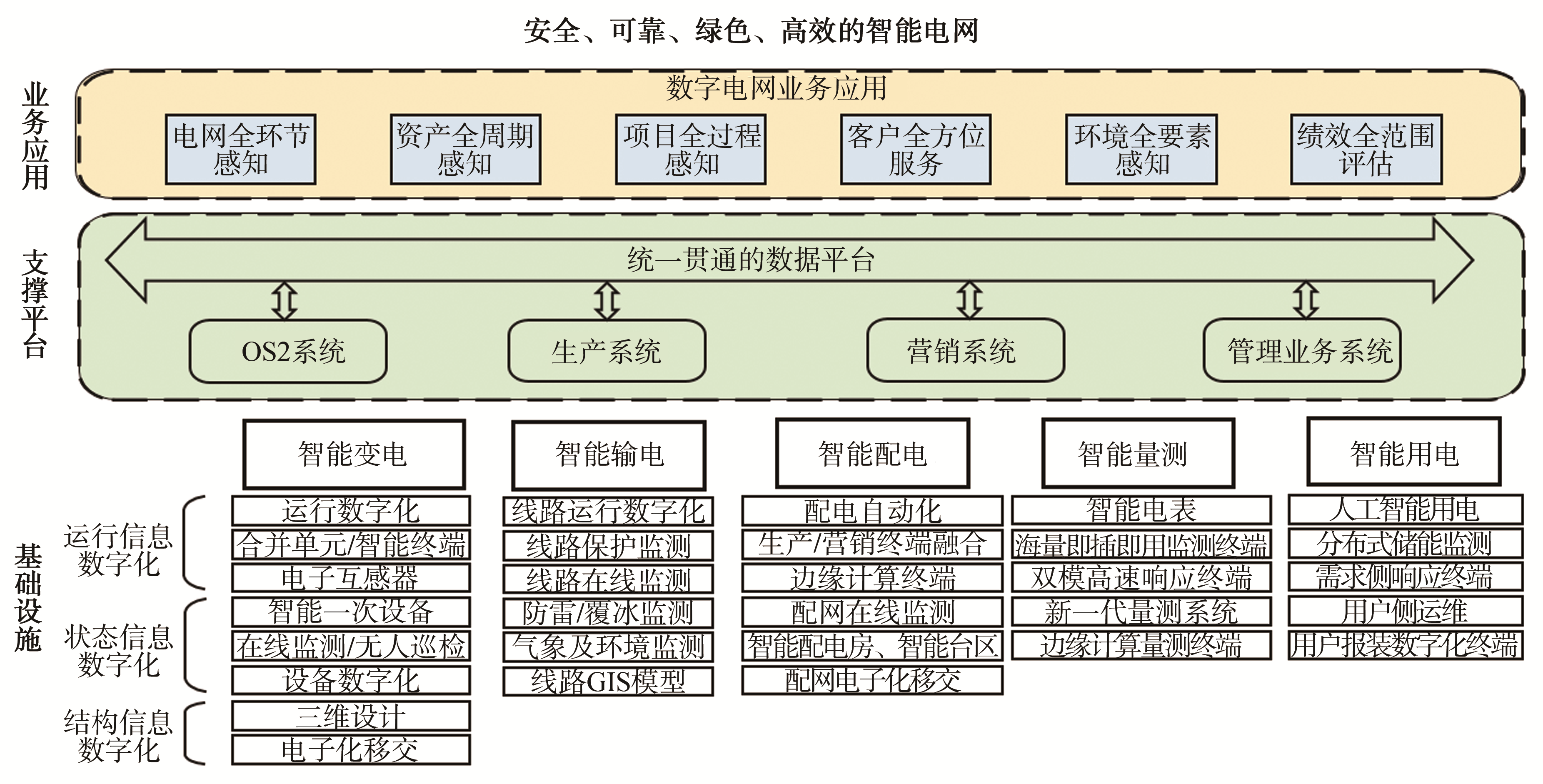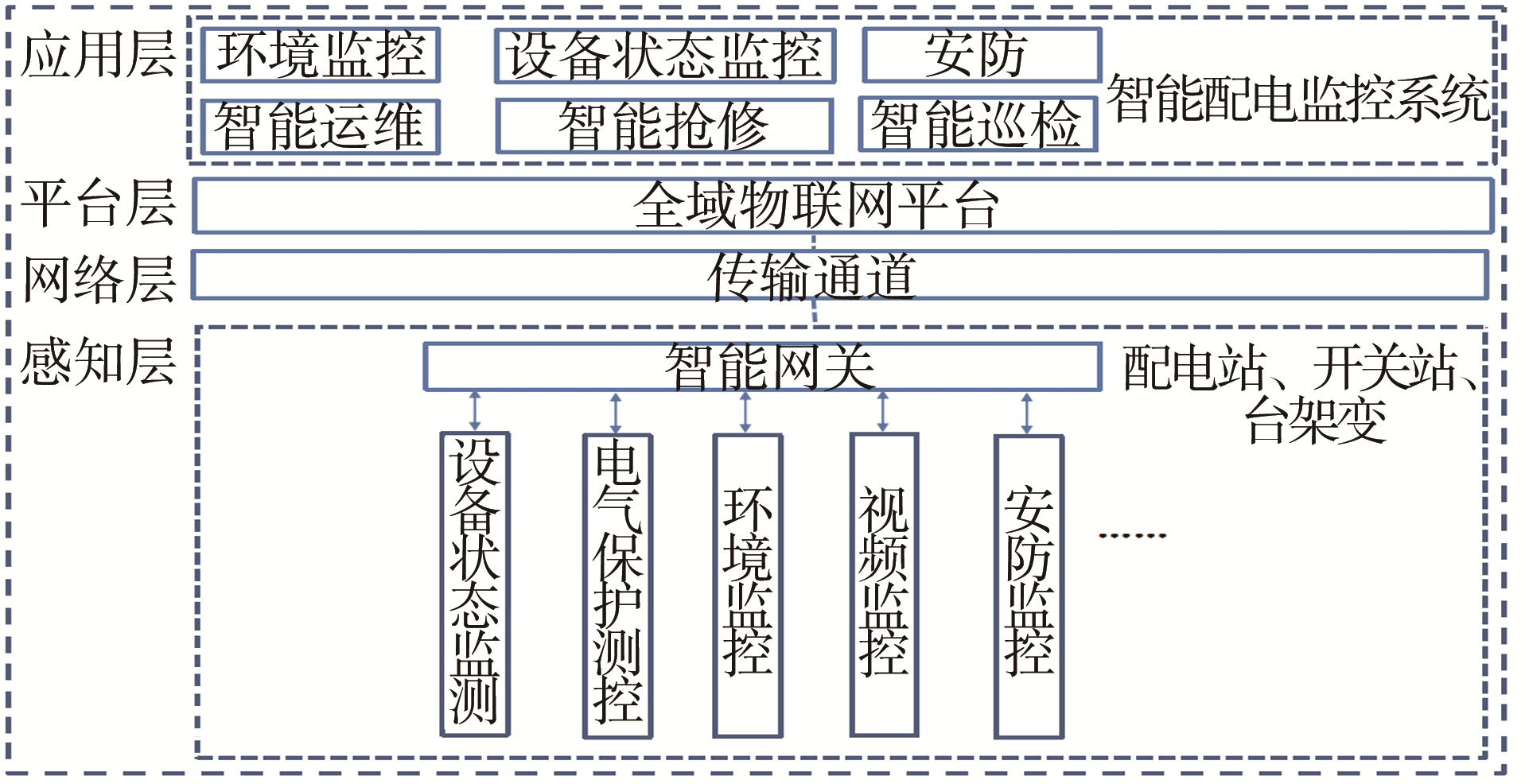HTML
-
2015年,国家发展改革委、国家能源局联合印发《关于促进智能电网发展的指导意见》(发改运行〔2015〕1518号)。2018年3月,南方电网公司发布《南方电网智能电网发展规划研究报告》,该报告作为公司智能电网发展的顶层设计,提出的9 大领域、32项重点任务、16类系统性工程。2018年4月,南方电网公司发布《南方电网公司智能电网发展规划2018—2020 年实施行动计划》,以智能电网示范区建设为抓手,促进公司智能电网发展落地见效。南方电网智能电网建设路线:坚持新发展理念,着眼于数字电网、智能电网建设、运营、产业链整合和能源生态构建,全面落实公司智能电网发展规划:到2020年,智能电网发展格局基本形成,到2025年,智能电网基本建成,到2035年,公司关键核心指标位居世界一流水平。因此,加快构建南方电网智能电网标准设计体系,形成可推广复制的建设标准,对全面落实智能电网发展目标尤为重要。
-
需重视顶层设计与系统规划问题,结合电力系统、通信技术和信息技术领域的新技术研发应用,以科技研发和工程试点实践相结合,适应智能电网发展建设的实际需要,及时对试点工程建设成果总结提炼。智能电网建设涉及到智能变电、智能输电、智能配电、智能量测、智能用电等多个领域。无论是在建立和修改相关标准设计体系,还是统一接口、协议和数据格式,都需要采用系统化的方法。编制工作从系统的角度出发,综合考虑系统的各种组成要素。在各环节的标准之间,统一协调有关技术及接口标准问题,以保证各标准之间能协调配合,满足各个环节的互联、互通及相互操作性,能够构成系统性、完整性的标准设计体系。以系统、互联、互动、完备、开放为原则,深入研究智能电网现有技术和未来发展方向,全面梳理现有电网技术标准体系,分析现行标准与智能新需求差异、与未来智能电网发展的差距。通过总结、提炼各个领域新技术、新领域发展的相关技术成果,对现行标准设计体系中无法适应智能电网发展的相关内容进行补充、修订与完善。整个研究过程涉及系统架构设计、技术方案选择和工程试点迭代的工作流程,往往需时1至2年及以上,需要将智能电网分成多个子系统,从每个子系统功能和作用的观点和角度来分析、建立标准,统一接口标准,使之最终形成一个科学完整的、关联度强的标准设计体系[1]。
-
南方电网目前已开展16个智能变电站试点工程建设,但尚需待建成投产后,验证实际成效。通过制定《南网智能变电站试点工程技术原则》,提出智能化、集成化、模块化的技术发展方向,包括基于集成信息平台的二次系统横向整合等。开展智能变电站试点建设。技术架构是基于统一的集成信息平台,实现全站信息的统一采集、统一处理,整合信息资源池,实现保护、测控等功能软件化、业务平台化、数据共享化[2]。应用电子式互感器、智能化高压设备,实现设备源端数字化采集和网络控制,实现设备的数字化、智能化,提升高压设备装备水平。以单元模块组合的方式完成设备由单元到整体的拼接,实现即插即用,简化安装,实现变电站模块化建设,提升标准建设水平。以数据同源、网络优化、平台共享,实现二次设备在线监测及状态检修,提升运维管理水平。探索间隔保护就地布置、直采直跳,强化智能远动、源端维护、智能告警及综合分析决策功能,提升设备可靠性、保护速动性,提升智能调控水平。
-
依托20个智能电网示范区建设,取得了良好成效。广州供电局深度融合“云大物移智”等技术,实现智能配电站的自动化、数字化、可视化,进一步降低设备故障率,优化资产利用率、提高运维质量和效率,适应多种能源灵活接入、提升服务互动能力。佛山供电局试点建设的10 kV智能预装式配电站(户外箱式变)具备智能有载调压、全方位状态监测和综合保护、远程投切负荷、故障自动隔离、热老化率在线寿命评估、使用降噪外壳实现低噪音等功能,融合新型感知元件和一体化设计,自我感知箱变运行环境和健康状态。深圳供电局探索智能配电站、开关站采用模块化、装配式、现代化的理念,将配电房与环境融合,并综合利用配网自动化、智能传感及物联网技术,实现配电房设备状态及环境条件的实时监控。东莞供电局试点建设户外箱式智能开关柜。模拟户内开关站室内运行环境,具有智能温湿监控、设备状态监测、电气量监控等,保证通讯、继保等一、二次设备在户外安全稳定运行。茂名供电局试点开发智能台区低压配电板标准件,增加智能网关、低压智能开关等元件,应用智能漏电保护系统,完全解决涉电公共安全问题,为智能台区发展提供了成功实践。
-
公司推动高可靠性智能电网示范区建设,有序推进配电网智能技术的应用,经过总结、提炼,基于南网全域物联网平台技术,制定了基于智能技术与运维策略相融合的智能配电领域的标准设计与典型造价(V3.0版),这是公司构建智能电网标准设计体系的重要组成部分之一,也是国内首个颁布的智能配电标准设计成果,是公司科技研发与工程实践相结合的成果,体现了成果先进性。未来智能电网大量应用集中在配电网侧,因此,这是公司迈向全面加快智能电网建设的关键一步,有助于推动全面落实公司智能电网发展规划建设目标。
2.1 智能电网标准设计研究方法
2.2 智能变电试点工程
2.3 智能配电试点工程
2.4 发布公司标准设计与典型造价V3.0(智能配电)
-
按照公司智能电网、数字南网建设要求及技术路线,开展基于南网云和全域物联网平台的系统建设,具备对环境、视频、安防、设备状态、电气等信息的监测和控制功能。系统对各种监测及报警数据进行分析,实时反映至现场运行情况,通过联动控制,保证安全运行,防止因环境改变、非授权活动、设备状态变化等情况引起的事故,满足对配电站远程运维的可靠管控。根据供电区域等级、负荷重要程度和运维需求合理选择监控点,并结合配电站设备现状和改造条件合理选择监控方案,新装智能监控装置配置方案中各设备的技术参数、功能配置等要求应遵照相关技术规范条件书的内容执行。传感器终端宜具备简易部署、免维护,超低功耗、内置式、嵌入式安装,支持有线和无线通讯的传感器接入。
-
本地通信支持RS485、RF、以太网、LoRa、电力载波宽带/窄带等方式。智能监控终端(智能网关)与传感器数据通信采用混合组网的方式,数据流量比较大的视频、红外热成像等采TCP/IP协议局域网技术组网;数据量较小的采用RS-485组网;直接接触高压带电部分的传感器采用无线通信技术组网。
-
远程通信支持光纤和无线,通信接口满足南网全域物联网平台的技术要求。有条件地方宜采用光纤通信,偏远地区可采用无线通信。
3.1 基于南网云和全域物联网平台的系统建设
3.2 站内通信
3.3 站外通信
-
基于南网云和全域物联网平台建设的智能配电站的监控与管理系统,系统架构主要分四层,包括应用层、平台层、网络层、感知层。智能配电监控系统架构如图3所示。
-
部署在南网云平台上,融合“云、大、物、移、智”等技术,实现电网生产与管理各类终端及数据统一实时采集、统一管理、数据统一共享的电力行业数字化基础物联管理平台,对上为大数据平台和各类业务应用提供不同的数据服务,对下灵活接入不同设备通信协议的终端,具备按照统一设备信息模型,采集各类型感知数据,进行模型转换和数据预处理,并分发至大数据平台或相关专业系统。
-
感知层主要利用各种传感器、智能终端设备、通讯模块、智能网关实现信息的采集、识别和汇聚,通过统一的物联网传输协议标准将终端状态和产生数据传送到物联网平台,实现物的感知、互联、实时优化和预测。感知层主要包括智能网关、设备状态监测测单元、电气保护测控单元、环境监控单元、视频监控单元、安防监控单元,合计26种智能化配置。各单元实现功能情况如下:
智能网关:是安装在智能配电站、智能开关站、智能台架内的本地监控设备,实现站房内环境温度、湿度、SF6气体浓度、臭氧浓度、烟雾火灾、水浸、噪声等环境信息及变压器、高压柜、低压柜的温度、局放、负荷监测等设备信息采集,具有边缘计算能力,可就地执行调温除湿设备、灯光、视频、门禁及防误操作闭锁等智能联动本地策略,减轻主站数据存储和处理压力,实现配电远程智能化运维管理,将处理后的状态信息通过标准规约上传物联网平台,对相关的检测数据、告警数据及文件数据进行本地存储。
设备状态监测单元:配置温度传感器、局放传感器、测温采集装置、局放采集装置,实现对变压器、中低压柜的温度、局放等状态量的实时监测。
电气保护测控单元:中压保护测控参考配电自动化标准设计执行。低压保护测控通过配置低压测控终端实现采集低压回路电压、电流等数据并上传,通过数据分析将三相不平衡、低压线路过载、缺相、断零故障等信息上传主站系统并告警等功能。对智能无功补偿设备电容器组投切状态,低压开关分合状态、故障信号实时采集和上传。直流系统通过配置监测设备监控每节蓄电池的电压、电流、温度、内阻、容量等参数,并可实现阀值设置和告警。
环境监控单元:配置环境温度、湿度、SF6气体浓度、臭氧浓度、烟雾、火灾、水浸噪声等在线监控装置,实现对智能配电站内环境参数的实时监测。
视频监控单元:通过视频拍摄配电站室内情况、人员活动情况以及设备上指针表、信号灯和开关变位信号,实现对配电站环境和设备状态的主动记录和预、告警。
安防监控单元:配置门禁、防误操作装置以及视频AI识别,实现对电房内设备、人员的安全工作状况的实时监控。
-
网络层主要实现电力物联网中各类信息在感知层与平台层、应用层间广域范围内的传输。主要包括:有线通信、无线通信和卫星通信。
-
平台层主要是指全域物联网平台,支持并实现电力生产输、变、配、用等各专业现场监测终端数据的统一接入,支撑生产领域大数据分析和智能应用。平台层主要由连接管理、设备管理、应用使能、运营支持等组成。
-
应用层可调用平台层的北向接口,实现电力业务领域针对业务需求在应用系统开发需要。应用层的系统包括但不限于:生产监控指挥中心、配电站智能配电监控系统、生产管理系统、配电自动化系统等。
4.1 智能配电监控系统
4.2 全域物联网平台
4.3 感知层
4.4 网络层
4.5 平台层
4.6 应用层
-
如图4所示,共16个模块方案:第一卷:智能配电站。室内配电站7个模块,箱式变2个模块。第二卷:智能开关站。户内开关站1个模块,户外开关站(环网开关柜)2个模块。第三卷:台架变智能台区。常规台架变2个模块,全绝缘台架变2个模块。
结合地区的运维要求,依据供电区域等级、供电负荷重要程度等因素进行差异化配置。
-
智能配电站与智能开关站划分为标准、中级、高级配置三个技术方案:
标准配置:适用于所有供电区域,将配电自动化由中压向低压延伸,主要解决中低压负荷的监测以及运行环境的监测;
中级配置:适用于A、B类供电区域,主要实现中压馈线自动化、低压负荷监测、无功补偿监测、变压器测温、以及运行环境、视频的监测;
高级配置:适用于A+供电区域,在中级配置基础上增加开关柜局放、电缆头测温等设备状态监测内容。
-
台架变智能台区标准设计根据低压配电装置型式不同,分为台架变+低压配电箱和台架变+低压配电房两种,每种又包括常规台架变和全绝缘台架变两种。其中全绝缘台架通过对关键连接部位(如变压器触头、接头等)使用专用绝缘材料,结合应用绝缘电气设备(如隔离开关、避雷器、断路器等),使台架变在工况电压下,达到全绝缘、抗老化的效果,从而提高供电的安全性。全绝缘台架的使用既能有效防止人员触电事件的发生,又可以避免小动物或飘挂物等造成的短路接地事故。
台架变智能台区划分为标准、高级配置二个技术方案:
标准配置:适用于各类供电区域,主要监测台架变及低压配电箱(房)设备状态、低压负荷平衡分布以及运行环境。
高级配置:适用于A、B类供电区域,主要实现视频监控自动化运维,监测台架变+低压配电箱(房)设备状态、低压负荷平衡分布以、用户数据监测及运行环境。
5.1 V3.0(智能配电)
5.2 智能配电站与智能开关站
5.3 台架变智能台区
-
遵循“简单、经济、安全、有效”的应用原则。
按照《南方电网标准设计与典型造价V3.0(智能配电)》同步设计落地建成投产的博鳌乐城智能电网综合示范区一期建设工程与佛山紫南美丽村居示范项目(沙边配电站)建设工程2个示范性智能配电房,完全贯彻标准设计V3.0的技术原则,完全打通“感知层、网络层、平台层、应用层”四个层级。图6为紫南沙边配电站低压三相不平衡监测结果,统计最高三相不平衡率和发生时间,可按日、周、月查询,并对异常进行告警等。
-
配电站、开关站、台架变、低压台区是配网的重要组成部分,设备数量巨大,故提高配电网设备装备水平,对其安全运行至关重要。《南方电网标准设计与典型造价V3.0(智能配电)》的发布,统一了智能配电设计标准和建设标准。南方电网继续在智能变电、智能输电、智能配电、智能量测、智能用电等领域开展科技研发,全面支撑未来电网发展相关技术方案,不断丰富智能电网标准设计内容,创建一流智能电网标准设计体系,为电网设备提供良好的运行环境,全面适应未来电网智能化及数字化发展趋势。













 DownLoad:
DownLoad:




